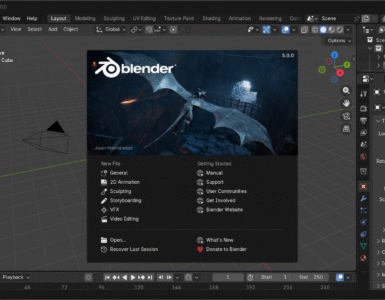Due to the COVID-19 pandemic the importance of learning environments, pedagogical methods and learning technologies has become particularly important in higher education. Universities have invested in distance learning and technologies, but has enough attention been paid to the challenges of using new technologies in teaching and have the opportunities that such technologies offer been sufficiently exploited? The changed learning situations require a new kind of pedagogical approach and a rethinking of traditional teaching methods. Universities should take seriously the need for the development of pedagogical methods and practices and teachers should be encouraged to engage in a culture of experimentation with different learning technologies and pedagogical solutions.
My colleagues and I in Karelia University of Applied Sciences in Finland have been carrying out research into using advanced technology in online teaching based on our firm belief that as technological choice needs to support learning, novel technologies should be tested in teaching in order to find a good and effective teaching practices. As part of our research, we used a case study in a business studies course that we are offering. This allowed us to set up a working experiment on the use of 360 degree video. Experiments with such new technologies can be fun and bring variety and interest to teaching and enable us to explore challenges, opportunities and deeper pedagogical purposes.
Opportunities
There are many benefits that new technologies can offer for teaching and learning. Technologies can be used to employ different learning theories and pedagogical practices. In online, we can use video technology for example to support lecturing, collaborative learning or arranging study guidance between teacher and student. Students need to be activated in the learning process and such technologies can help engaging students. Learning games have also been found to be a good way to engage and create a sense of “flow” for students.
360 degree video technology allows students to monitor the whole learning environment. In our research, it was tested in online lecturing and we found that comparing 360 degree video to the normal video stream, the sense of presence was more comprehensively felt among students. Students found that their voice was heard clearly online and remote students could follow what was happening in the classroom. This can lead students to focus more on the lecturing and it may provide a better learning experience and outcomes.
There are also other possibilities that 360 video technology offers for online lecturing. For example, students can watch the lecture from home in a pleasant learning environment in peace and privacy. The learning is free from physical limitations, there is possibility to follow the activities of other students and both the teacher and students can use their own familiar devices. Using devices and applications that are already familiar to students makes it easier to focus on the essential.

Immersive XR (Extended Reality) technologies (AR, Augmented Reality, VR, Virtual Reality and MR, Mixed Reality) used in learning, provides an opportunity to engage students in teaching by enabling deeper and more authentic learning experiences. The use of technologies diversifies learning environments and promotes meaningful learning by creating a more realistic understanding of learning phenomena. Technological solutions can help students to better understand and reflect on their own learning. In addition, learning motivation can be improved if students are offered different and meaningful learning experiences.

AR technologies can be used to create a more immersive learning experience. WebAR is a good way, for example to convey learning materials without the need for downloading and installing a separate AR application. This makes it easier to introduce AR content to students.
Challenges
Using new technologies in learning poses various challenges depending on the technology used. These challenges may lead teachers to abandon otherwise usable technologies. The challenges can be divided into technological, pedagogical and other challenges. Technological challenges include, for example, disruption or delay in transmission, poor sound or image quality, short battery life, no possibility for synchronous communication and shortcomings of usability in user interface.
The most challenging problem may be the increased cognitive load on the part of the teacher. Organising teaching at the same time in online and classroom, managing the new learning technologies, implementing various pedagogical practices such as online collaborative learning or managing small group works, etc. present a variety of different pedagogical and didactical challenges for the teacher.
Other challenges may arise depending on the specific features and functionalities of the technologies used. Challenges such as student’s privacy and legal issues must be resolved in accordance with the law and the principles of the organisations providing the course. Students have a right to privacy and GDPR regulations need to be followed.
Solutions
It is important to address the challenges in order to develop effective pedagogical practices. Competent support staff or assistants helping with learning technologies and pedagogical arrangements can reduce the cognitive load experienced by the teacher. Proper preparation in advance and testing of learning technologies can also be helpful. If possible, universities should develop teacher support and invest in the development of learning environments such as we have done in Karelia University of Applied Sciences (Finnish only).
Future technological developments will also solve many of the current challenges. At best, the technology is automated and performs its functions independently and the teacher can focus on teaching. For example, robotic cameras can follow the teacher in the classroom detecting the movement and automatically transmit the video to the online students. AR and VR content simulates real working life cases and serves as realistic learning materials for students. AI-generated learning videos and teacher clones can make the production of instructional video materials faster and quantum holograms can be used to visualize more realistic learning materials and maybe bring new solutions for distance learning.
Editor’s note: read the full research article by Mikko and his colleagues here.

Author
Mikko Hyttinen
Lecturer, Karelia University of Applied Sciences, Finland














